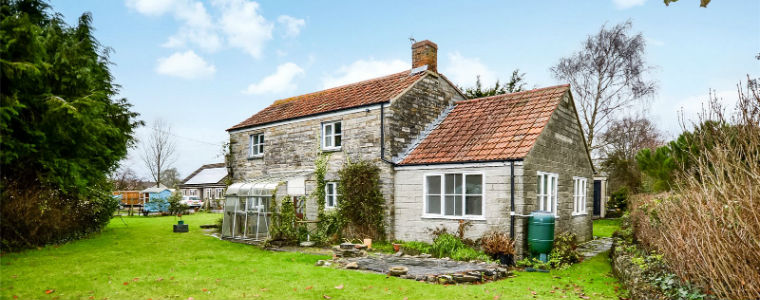
Subsidence is one of those fearful words that no homebuyer wants to hear. But what exactly does it mean for the property, and what can you do about it? At Able Surveyors, we are experienced at detecting signs of subsidence in properties of all ages. Our professional service portfolio includes the full range of RICS home surveys, meaning we can advise you of major faults and building defects before you proceed with the purchase. In addition, we can provide ongoing monitoring services for newly detected cracks and other situations where the presence of structural movement in a building is suspected and must be confirmed (or ruled out).
What is subsidence?
In basic terms, subsidence happens when the ground on which the building stands begins to sink. Unstable foundations can cause the house to become askew and strained by the movement below. Structural damage can occur that calls into question the integrity of the building. While, ultimately, this could lead to the collapse of the structure, in practice subsidence can often be dealt with quite easily, particularly if the signs are spotted early on.
What causes it?
There are many reasons why subsidence may occur. Moisture plays a critical part and this can manifest in various ways. If the house is built on clay soil, for instance, the ground is likely to swell and shrink with rising and falling moisture content through the seasons. This can cause natural shifts which may well affect the building on top. Soils such as gravel and sand, on the other hand, won’t shrink or swell but could be at risk of being washed away as a result of extended periods of wet weather or, more likely, damaged underground drainage pipes.
The water content of the soil is also affected by trees, shrubs and bushes growing near the building. Plants draw up the moisture they need through their roots, leaving the soil drier and therefore more susceptible to shrinkage. The effect is obviously compounded on clay soils. Some trees such as willow, poplar, oak and elm are particularly thirsty and should always be situated at a safe distance from the house, and preferably not planted at all in a regular-sized garden.
Other causes of subsidence can include seemingly innocuous things like persistent traffic-induced vibrations and building work close to the house, long-term leaking underground pipes, and a history of mining in the area.
How to spot the signs
If there is subsidence, detecting it early will make remedial work much easier and potentially a lot cheaper. Tell-tale signs include cracks in the wall that appear suddenly and are:
- Generally larger than harmless plaster cracks (>3mm)
- Typically diagonal in nature, often being wider at the top than at the bottom
- Often situated around windows and doors, or where an extension joins the main building
- Visible on the inside and outside of the property
Drops in flooring is another potential indicator of subsidence. Uneven skirting boards, with gaps underneath, and uneven surfaces elsewhere, may all point to structural movement having occurred.
At Able Surveyors, our team have a keen trained eye and will be able to tell the difference between cracks that are perfectly normal and nothing to worry about, and signs of subsidence, which will be clearly documented in our survey report.
Should you buy a house with a history of subsidence?
Of course, the $64,000 question is whether you should run a mile from any house that has suffered from structural movement at some point, or whether it is OK to proceed with the purchase, and at what price. Our professional advice is to obtain all the salient facts before making your decision. To that end, we recommend that you:
- Have a full RICS Building Survey carried out to establish the nature and severity of any structural problems. The report will also contain our recommendations for remedial action along with cost estimates.
- Discuss the property with your mortgage broker or lender as a matter of priority. Lending criteria vary between mortgage companies, and additional checks will be necessary, while some may refuse to provide finance on subsidence affected properties altogether.
- Obtain proof from the seller that any historic subsidence issue has been fixed, including details of what was done (monitoring, underpinning etc) and when it was completed.
- Research home insurance options for properties with a history of subsidence. Standard home insurance cover may not be available, or only at exorbitant premiums, but there are many niche insurance providers who may be suitable.
What price should you pay?
While there is little doubt that a house afflicted by subsidence, past or present, will be worth less than a comparable property where structural movement is not an issue, it is difficult to put a clear figure on this. Every property is different, and it is up to the seller and the buyer to negotiate a mutually agreeable purchase price.
This is where a RICS Building Survey can be hugely helpful to the buyer. Armed with the detailed report findings regarding the structural condition of the building, you are now in the best possible situation to make an informed decision, whether you choose to proceed with the transaction as planned, ask the seller to remedy the problem, renegotiate the price or walk away from the sale.
If you would like to discuss your next property purchase with our expert team, or get an instant survey quote, please contact the Able Surveyors team.
